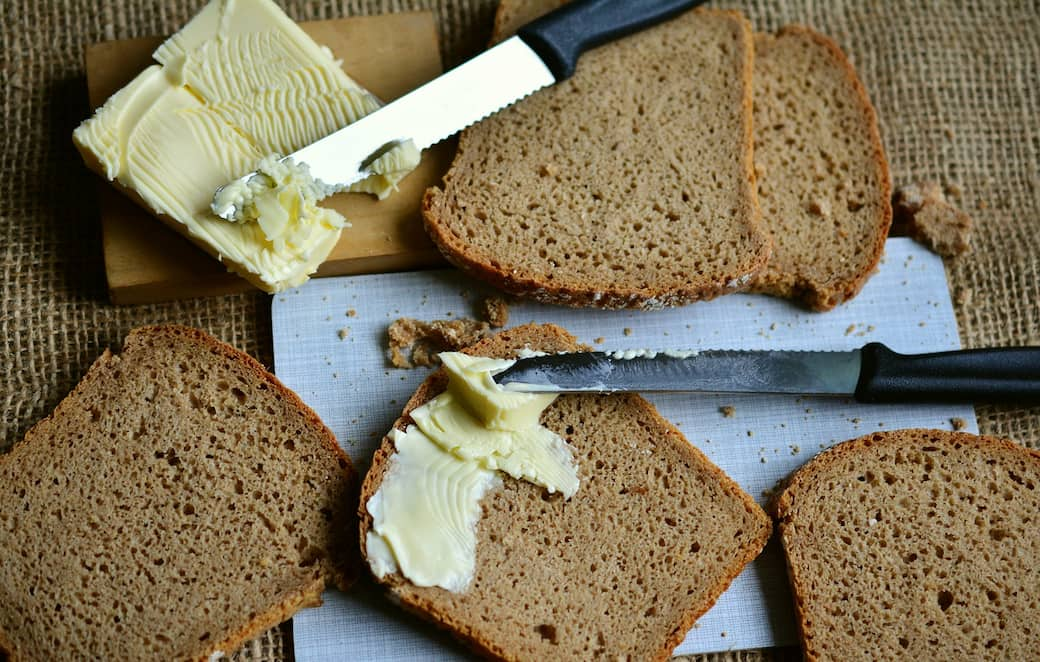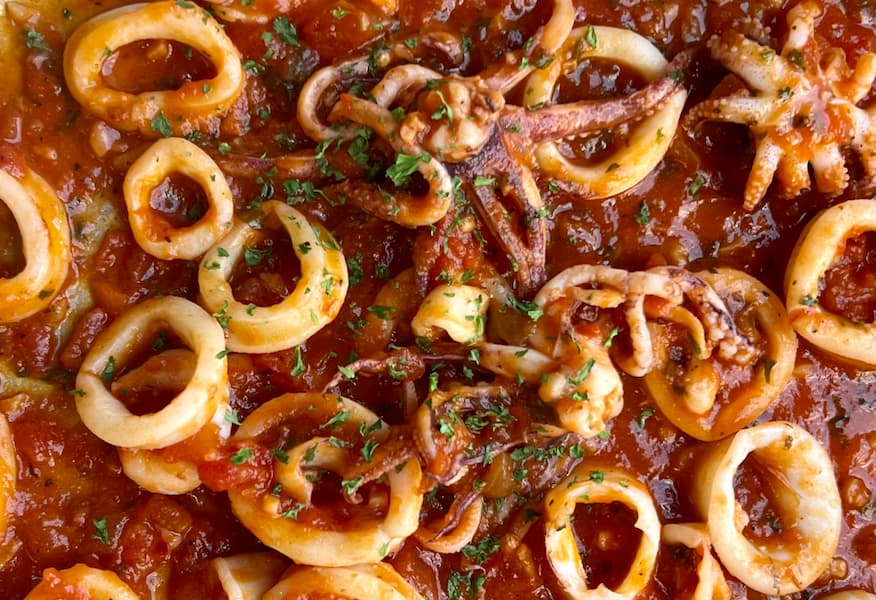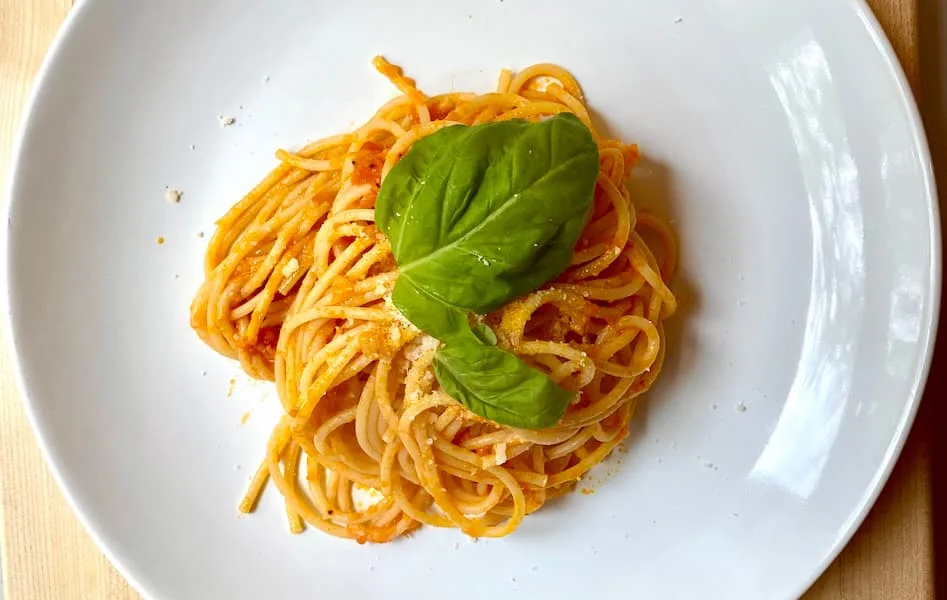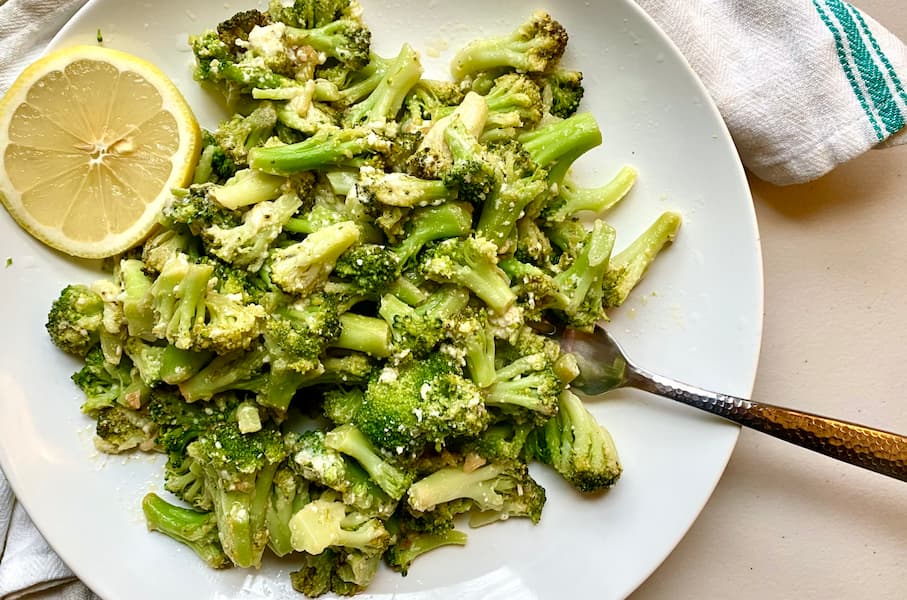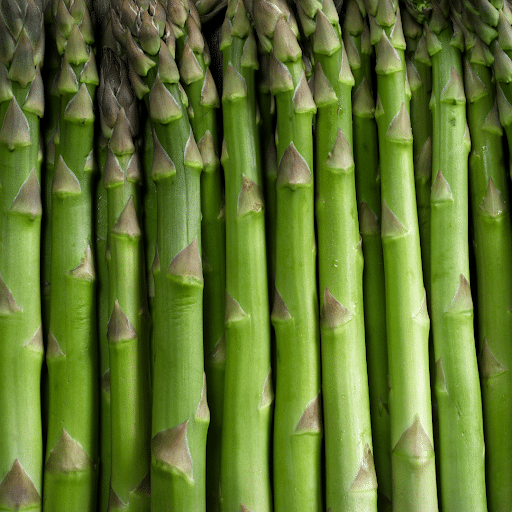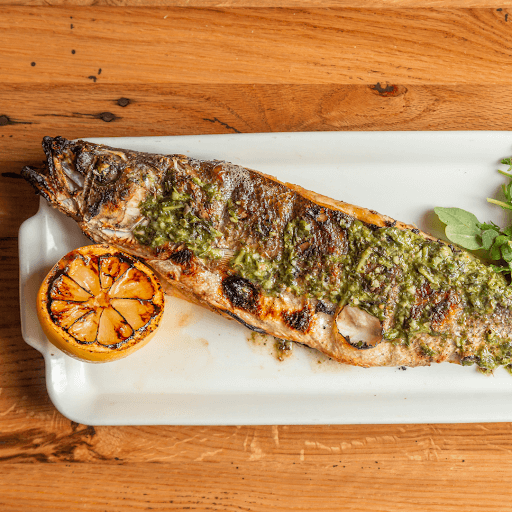Butter vs olive oil. This topic has been debated for generations in many studies and journal articles. And with the advent of the Internet, the debate has moved to websites, blogs and forums.
Everyone has their own opinions, preferences, and favorite recipes. But what is objectively the difference between the two?
Which one is the healthiest? Which makes food taste better? Can you use them in a diet?
Today I will share everything I know: how they are made, their nutritional values, health benefits, and smoke points. And of course, how they are used in the Mediterranean diet, and what Italian recipes to try with each.
This is a blog about Italian cuisine, after all, and the whole “butter vs olive oil” thing marks an important cultural divide in the boot-shaped peninsula.
It will be a long article, but at the end you will have a complete overview on all the differences between these two ingredients, and you’ll also have many delicious Italian dishes to try at home.
So sit comfortably and take your time, or use the table of contents down here to go to the parts you are more curious about! LFG!
Table of Contents
A cultural difference
Many of the online articles comparing butter vs olive oil focus mainly on their nutritional differences, health benefits, and different tastes.
Anyway, as an Italian, the first difference that comes to mind is cultural and geographical.
Indeed, the choice between olive oil and butter marks a clear distinction between the culinary traditions of Northern Italy and those of the central and southern regions.
Butter is more widely used in the North, and is featured in many local risottos, main courses, stuffed pasta dishes, and more.
In Central and Southern Italy, on the other hand, people use oil to cook just about anything that needs to be heated.
The gold of the poor
Today, buying high quality olive oil can be really expensive. But for centuries, ordinary people living in rural areas of the central and southern regions could easily access fresh, organic extra virgin olive oil.
The cultivation of olive trees was already widespread in Italy during Roman times. And after a period of decline in the early Middle Ages (when it was cultivated only by a few monasteries), oil became the main source of fat for ordinary people along with pork lard.
In rural areas of regions such as Le Marche, almost anyone had access to olive trees.
Before the arrival of feudal lords, the monks ruling these areas used to assign small pieces of land to common people with contracts called “in enfiteusi”. These contracts lasted 3 generations (after which they could be renewed) and guaranteed entire families a home and land to farm, in exchange for a small percentage of the harvest and a promise to improve the quality of the soil.
This ensured that nearly everyone had a small piece of land on which to grow olives. And in later centuries up until the present, those who did not have any helped those who did in exchange for oil and other goods.
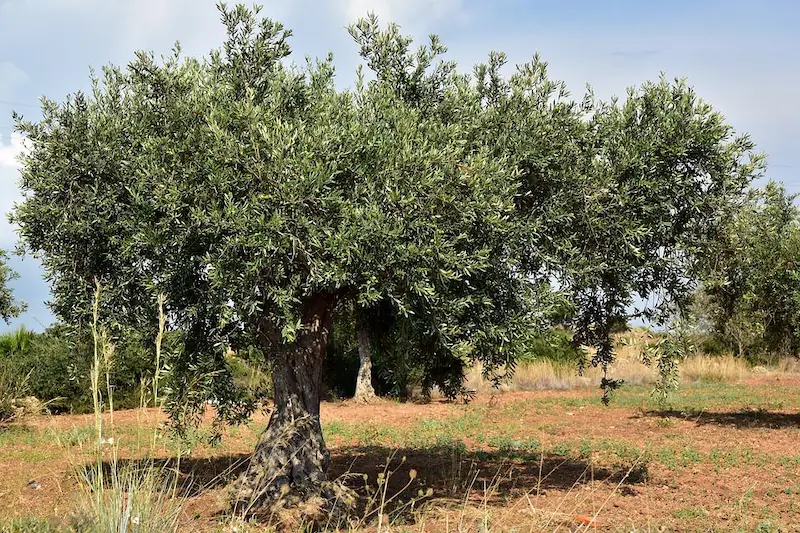
Even today, olive oil is easily accessible in my neck of the woods. Even those who do not own land grow at least a couple of olive trees in pots.
In November, many people still spend the weekend in the fields harvesting la jìa, often helping each other in exchange for oil, as we used to do for centuries.
I have many good memories tied to it.
In northern regions, however, history has gone differently and has made so that today most people prefer to use butter.
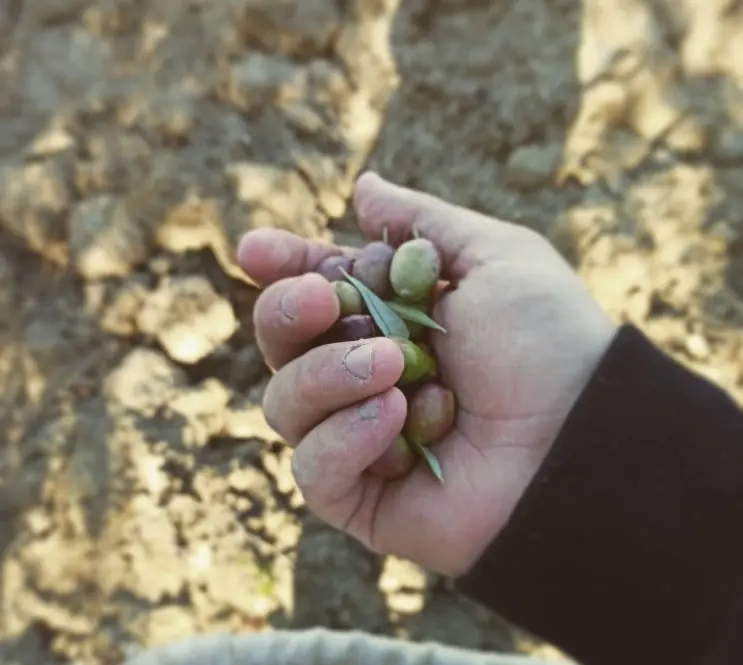
Butter in Northern Italy
Although butter is one of the oldest dairy products in the world, its use for food purposes did not become widespread in Italy until the late Middle Ages.
Its arrival in Italy is thought to be due to French influence on northern regions, but it is probably more a matter of economic and religious reasons.
You see, in the Middle Ages the Church forbade the use of any kind of animal fat during the days of Lent. In the central and southern regions this was not a problem, because as I was saying oil was easily accessible. But in the regions that were specialized in animal husbandry rather than agriculture, things were different. Therefore, the Church eventually allowed certain regions and provinces to use butter as well.
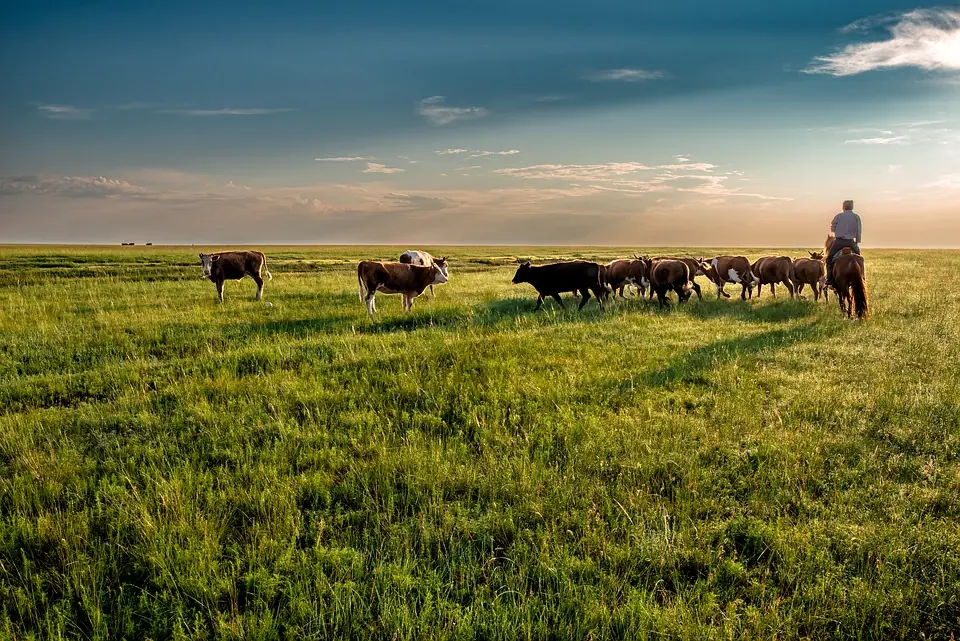
This solved the problem only partially, because butter was difficult to make and to store. Therefore, for a long time, it was produced in small quantities, and was nicknamed “the fat of the rich“. The sources I have found are discordant, but I think that poorer families used it only during Lent and resorted to lard for the rest of the year.
Then, in the second half of the 19th century, technological progress made butter easier and cheaper to produce – along with other animal products. This facilitated its spread among ordinary people, and those foods that were previously a privilege of the rich soon became symbols of northern cuisine.
Now, in those regions, many people use butter on a daily basis, either for sautéing or seasoning or stuffing their favorite foods.
As you can see, butter and olive oil mark a significant cultural difference between the various regions of Italy and are tangled in centuries of history and traditions.
And now we can move on to some slightly more modern curiosities. For example, what are their nutritional differences? Which one is best for health? And what is the best way to use both in the kitchen?
The fight between butter vs olive oil goes on!
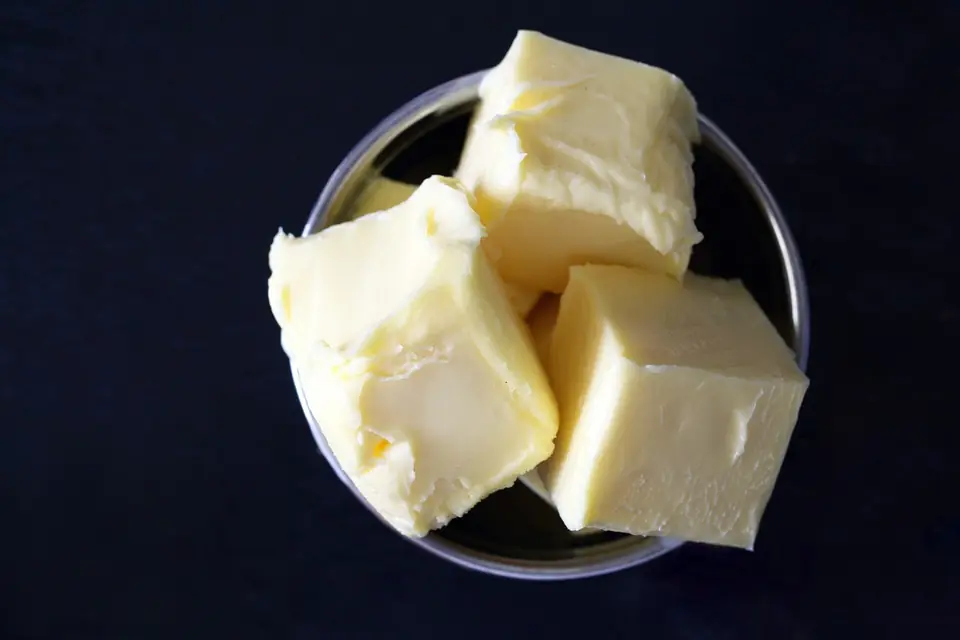
Everything you need to know about butter
As I was saying, butter is one of the most ancient dairy products.
In the past, it was produced through a centrifugation process that separated it from the other elements of milk, and it was mainly used as a cosmetic or medicine.
But people soon realized how many good things you can do with it, and began to use it as a seasoning along with oil and pork lard.
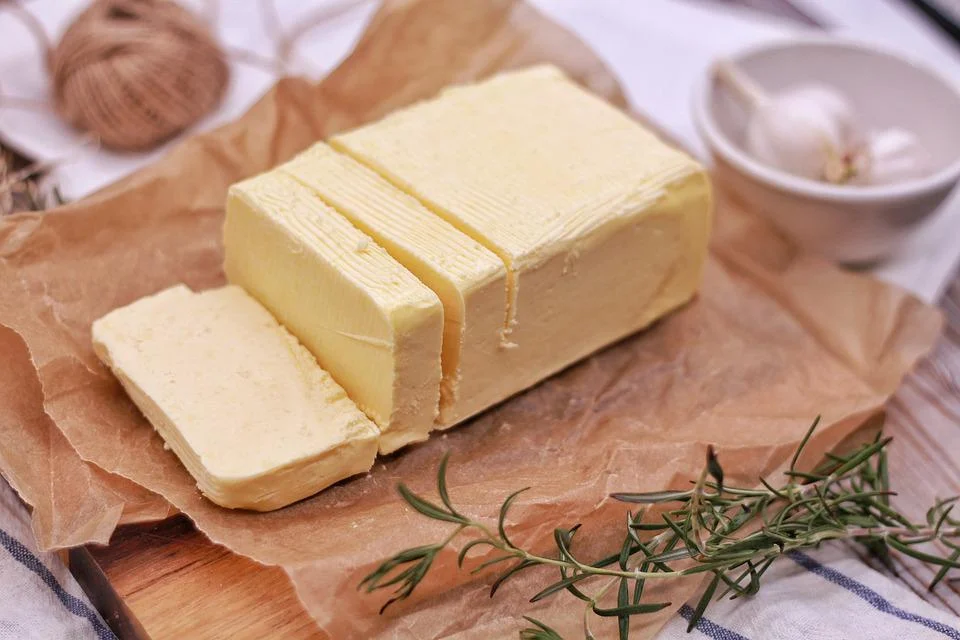
Types of butter
Fast forward to the present, now butter is prevalent in many cultural traditions, and there are many types of it. Here are the most common ones.
Centrifuged butter: the best quality butter. The kind that used to be churned using freshly milked milk, to be clear.
Clarified butter: unlike traditional butter, this type of butter is 99% fat, thanks to a melting process that removes all the milk solids, leaving only the liquid fats. It has a higher smoking point than centrifuged butter and is also known as ghee.
Anhydrous butter: a type of concentrated butter made from pasteurized fresh cream. It is used mainly in pastry and for industrial purposes.
Butter can be made by centrifugation or by “surfacing.” In the second case, the process involves letting the milk rest in large tanks for at least 20 hours, at 59 °F.
This allows the milk solids to separate naturally, but the types of butter obtained in this way are very acidic and of inferior quality, and must undergo many industrial processes to remove the bacteria they contain.
Depending on the production process, you can also make a distinction between salted or unsalted butter.
Salted butter is perfect for dressing salads or for spreading on top of a crouton, while the latter is best used for cooking, as it allows more control over the final flavor of the dish.
All of these types of butter are made mostly from cow’s milk or its derivatives (such as cream), but you can also use goat, sheep, buffalo, or even yak milk.
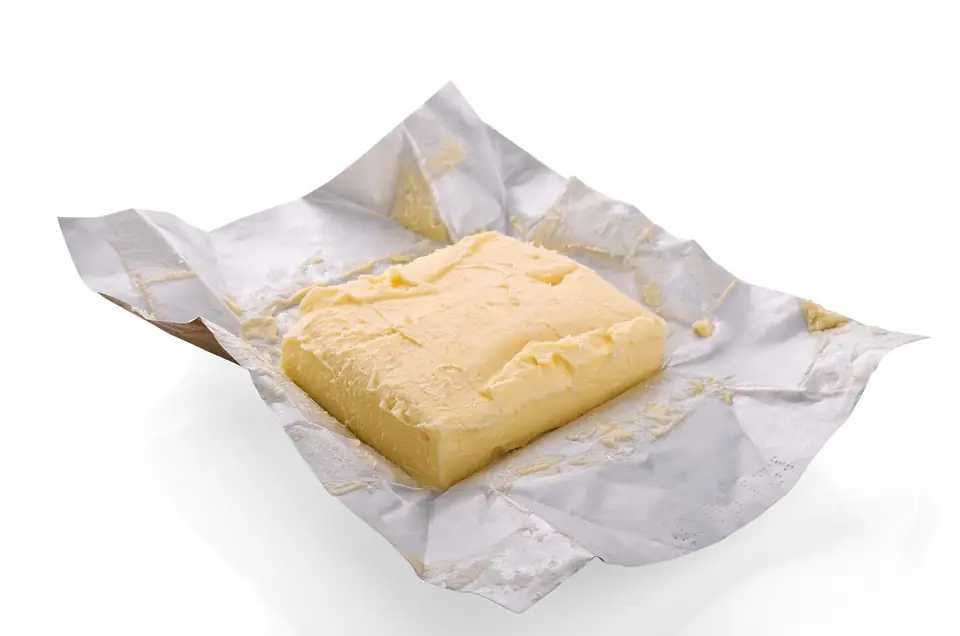
What's the difference between butter and margarine
Butter is often confused with margarine, but these two ingredients are very different.
First of all, butter is a product of animal origin, while margarine is made by emulsifying water and vegetable oils.
These two ingredients have equal caloric intake, but if you have to choose which one is better for your diet, butter is healthier than margarine.
The reason is that to make margarine you have to use a hydrogenation process that turns unsaturated fats into transfats. These are very bad for your health because they contribute to the elevation of LDL cholesterol (the bad cholesterol, to be clear).
Is butter keto-friendly?
I’m not an expert on the keto diet, but being a high-fat and zero-carb food, butter seems to be compatible with it. There are many keto recipes that you can make with it, but it would be better to limit it and prefer other sources of fat.
Keep in mind that animal fats can raise your cholesterol levels significantly. So if you have problems with high cholesterol, or are coping with type 2 diabetes and any kind of cardiovascular disease, olive oil is better for your diet.
Let’s spend a few words about it too.
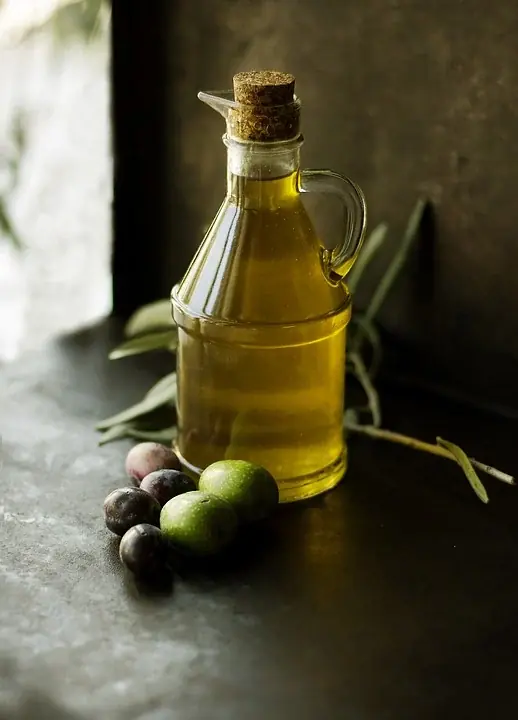
Types of olive oil
For thousands of years, olive oil has been produced and consumed all throughout the Mediterranean area, playing an important role in all the cultures that flourished there.
It is obtained by pressing olives, and depending on the technique used, it is distinguished into different types. This distinction was already made during Roman times, although today we have other parameters and names for the various types of oil. Let’s see the most important ones
Extra-virgin olive oil: the best quality. Also known as EVO oil or EVOO, it is obtained by mechanically pressing olives almost immediately after harvest. This ensures that it retains all the beneficial substances of the olives and has an acidity level of less than 0.8 percent.
Virgin olive oil: It is obtained in a similar way to extra virgin oil, but has a higher percentage of acidity
Lampante olive oil: It has a higher acidity than virgin oil, and cannot be used for food consumption.
Refined olive oil: is obtained by subjecting lampante olive oil to chemical processes, which gives it an acidity percentage of less than 0.3 percent.
Olive pomace oil: inedible oil made from the residues of a previous oil extraction through chemical solvents. It can be refined and later combined with virgin olive oil to become edible.
Butter vs olive oil: Nutritional breakdown
What’s in one tablespoon of olive oil? And how much dietary fat does a stick of butter contain? Let’s look at some nutritional facts. Here is a comparative table done with data shared by the USDA.
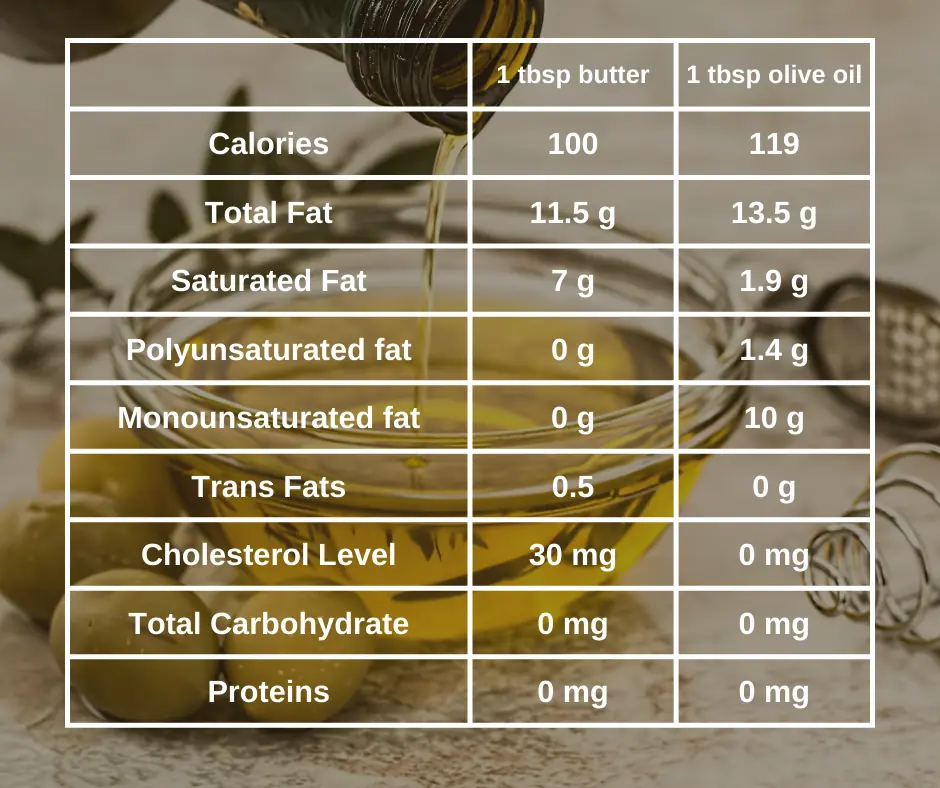
As you can see, at first glance olive oil seems to be worse than butter, as it has more calories and total facts.
But let’s take a look at which type of fat they contain.
Butter has higher percentages of saturated and trans fats, which can raise LDL cholesterol levels and heart disease risks. Olive oil, on the other hand, contains mostly monounsaturated and polyunsaturated fats, which are good for heart health and promote HDL cholesterol (the good kind).
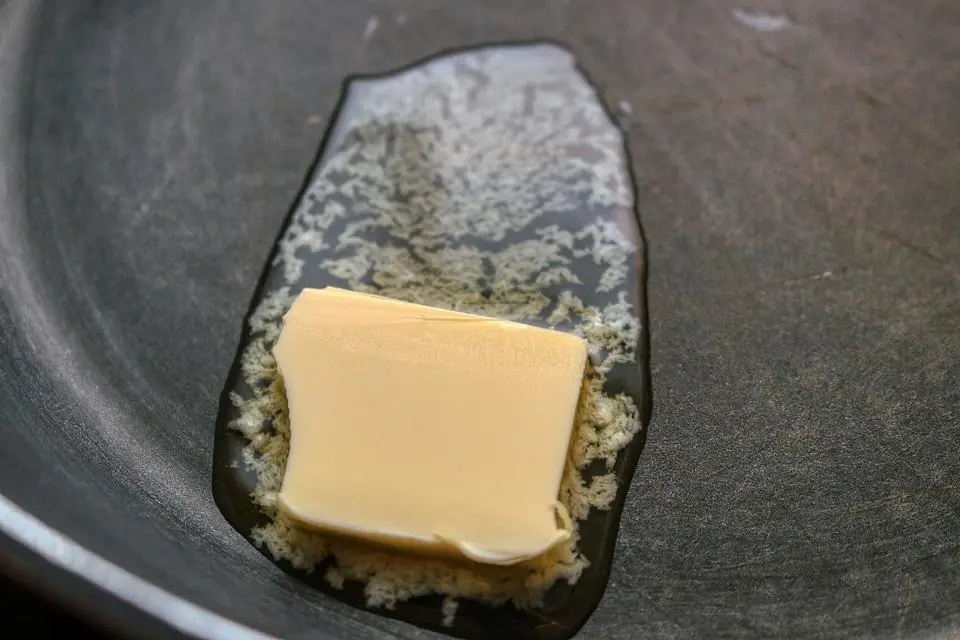
Smoke point
If you are trying to figure out which is better between butter and olive oil, their smoke point is another parameter to keep in mind.
Smoke point is the temperature at which a cooking fat begins to release parts of it in the form of smoke. This process can create toxic or carcinogenic substances such as acrolein – and many more. Therefore, it is very important to keep it under control, especially if you are frying food.
Common commercial butter has a relatively low smoke point ranging between 248 °F and 320 °F, while clarified butter ranges from 450 °F to 485 °F.
The smoke point of extra-virgin olive oil, on the other hand, can range from 320 °F to 401 °F. Refined olive oils can get as high as 470 °F.
I know. Put like that, this is just a bunch of numbers. Plus, you can’t always know the smoke point of the specific brand you’re using.
So, to be safer, let’s focus on the minimum smoke points:
- common butter: 248 °F
- clarified butter: 450 °F
- EVO oil: 320 °F
- refined olive oil: up to 470 °F
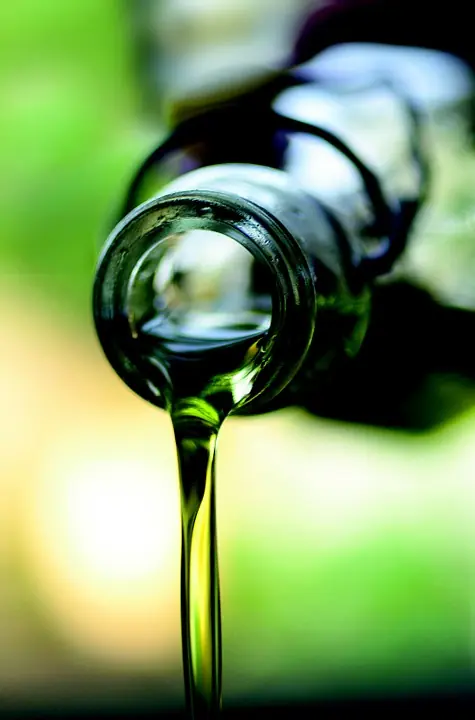
Olive oil vs butter: which is better for cholesterol levels and heart health?
As you can already see, olive oil wins this fight by a landslide (sorry, Northern Italy 😅).
Its monounsaturated fats and low cholesterol levels make it better than butter for heart health.
Also, these healthy fats contain many essential fatty acids. One of them is oleic acid, which has anti-inflammatory properties and helps reduce blood lipids and pressure. The American Heart Association says that these qualities could help reduce the risk of heart disease.
This hypothesis is backed by a recent study published on the journal of the American College of Cardiology. This study analyzed data gathered over 28 years, and it came to the conclusion that a higher consumption of olive oil can be associated with a lower risk of death by cardiovascular disease, cancer, and neurodegenerative or respiratory disease. This makes it one of the best oils for heart health, along with sunflower and canola oil.
Finally, olive oil contains vitamin E, which has antioxidant properties and is good for your skin, either when consumed or applied topically.
I can say from experience that it is an excellent home remedy against sunburns, and can be used to make scrub creams and skincare masks.
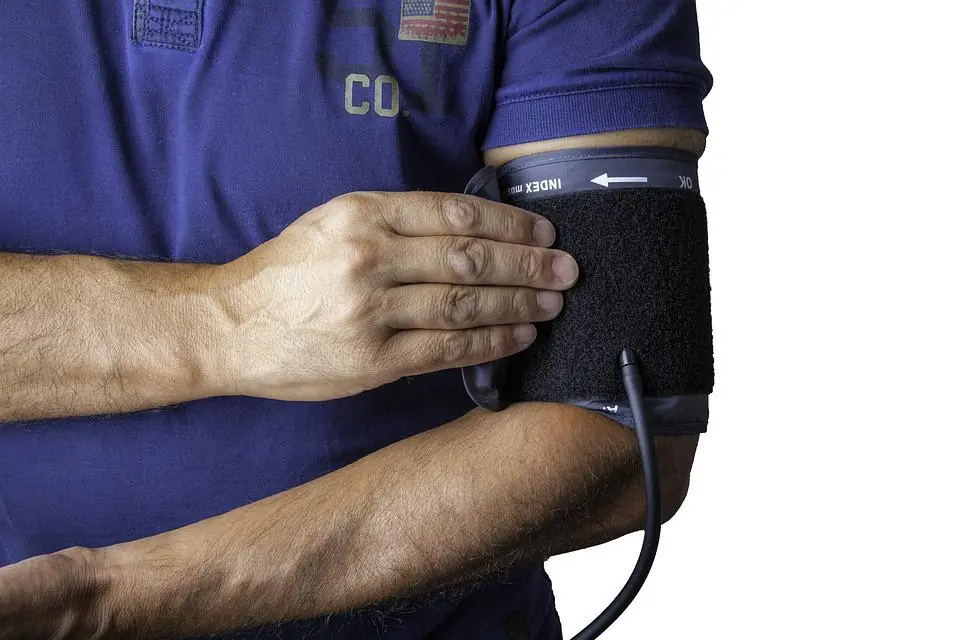
How to use them in the kitchen
I understand that, so far, this article has been a butter slander.
But as you know, I am certainly not the kind of person who judges food solely by its number of calories or fat.
On the contrary, with its nutty flavor and ability to make everything creamier, butter is what makes many recipes unique. In addition, some people believe it gives food a better flavor even when it is used only for sautéing.
So, enough with nutritional facts, and let’s move to culinary science to see how both butter and olive oil can be used in the Mediterranean diet.
This time, everyone wins.
Best recipes with butter
Quite predictably, butter is the undisputed king of many typical Northern Italian foods.
The first that comes to mind is risotto. Butter is used both to toast the rice at the beginning and to complete the cooking in the final step. This is because, as it melts, its fats bind to the starch in the rice, making the dish instantly creamier. Olive oil can’t do that.
This process is called mantecazione, and it can be done with rice, pasta, and some grains. Try it with this farro risotto recipe!
Anyway, this is just a taste of all the great things you can do with butter.
For example, butter can be used along with sage to season many stuffed pasta dishes, such as ravioli and casoncelli. The same goes for any kind of egg pasta. Try making simple tagliatelle with butter and sage. Delicious!
Also, butter is one of the 3 ingredients in béchamel sauce, my favorite cheesy treat ever. Try using it as a filling for any of your favorite baked pasta dishes. It’s to die for!
Finally, butter is also used to make short pastry and puff pastry, which can be used in many ways. Think of things like shortbread cookies or cream stuffed cannoncini.

Best recipes with olive oil
Generally speaking, I believe that oil is better than butter for flavoring meat and fish dishes.
And in Italian cuisine, olive oil is also an essential seasoning for many “poor man’s dishes,” such as bruschetta, spaghetti aglio e olio, lemon pasta, panzanella, and it can be used at room temperature for many salad dressings.
It is also an indispensable ingredient in regional specialties such as pesto, focaccia genovese, giudia artichokes, pinzimonio, and olive all’ascolana.
And needless to say, all the best southern Italian recipes must be made exclusively with oil. Pasta alla norma, caprese salad, gnocchi alla sorrentina, peperone crusco… not to mention the various conserve, such as stuffed round chili peppers in olive oil.
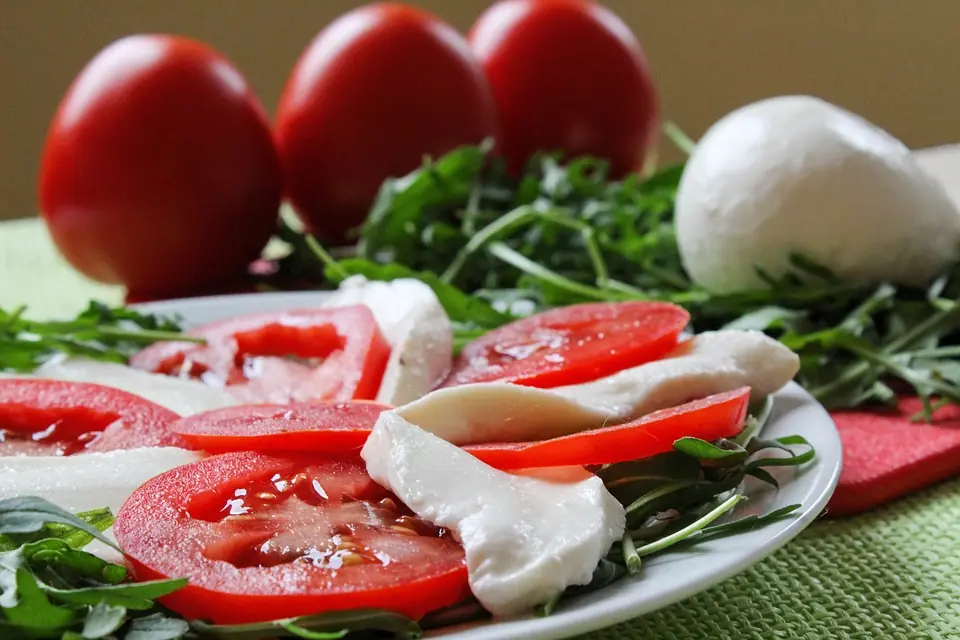
Butter vs olive oil: the conclusion
Nutritionally, olive oil is a healthier choice than butter because it has more healthy compounds, less saturated fats and total cholesterol levels, and a higher smoke point – unless you’re using clarified butter. Also, its monounsaturated fatty acids can reduce blood pressure and lower heart attack risk factors significantly.
However, both butter and olive oil are important in Italian culinary traditions, and each is an essential ingredient in many local foods.
I hope I have solved all your curiosities about the butter vs olive oil issue. And maybe, that I made you want to try a couple of recipes for each of them.
See you soon!

